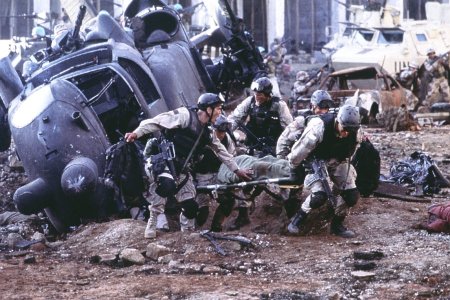“Somali refugees are probably an even bigger risk than Syrians, as Somalis have committed several terrorist attacks on U.S. soil recently.” (Leo Hohmann)
We gave you some numbers yesterday for Somali resettlement in the waning weeks of the Obama Administration and the numbers are astronomical.

Why is Somalia our problem more than 25 years since the civil war there and 23 years since, as part of a United Nations mission, we lost 18 of our finest men in the infamous Battle of Mogadishu ‘Black Hawk Down’ attack.
Why must American cities and towns be roiled decades later because the Somali people can’t govern their own country?
And, once the Syrian flow has begun in earnest, what makes you think it will ever stop?
Yesterday, World Net Daily reporter Paul Bremmer asks the same question. And, frankly, as we ramp up the Syrian resettlement, if Donald Trump doesn’t come through for those millions of voters who want to see the program curtailed especially from terror producing regions of the world, then we are in for another quarter of a century admitting Syrians along with the Somalis!
Here is WND:
While many Americans worry about the influx of Syrians, the U.S. has taken in even more refugees from Somalia this year. Through the first 11 weeks of FY 2017, the U.S. resettled 3,269 Somali refugees. At this rate, the country would absorb more than 15,550 by fiscal year’s end. At this point in FY 2016, the U.S. had only admitted 1,721 Somali refugees on its way to taking in 9,020 for the year.
More than 99.9 percent of the Somalis admitted this fiscal year are Muslims, as was the case in FY 2016 as well.
Hohmann noted Somali refugees are probably an even bigger risk than Syrians, as Somalis have committed several terrorist attacks on U.S. soil recently.
“There’s been no debate in Congress or the media asking the obvious questions: Why is America still taking thousands of refugees every year from Somalia more than 25 years after that country’s civil war broke out?” Hohmann asked. “How many is too many, and why aren’t the Somalis doing a better job of assimilating? Dozens have gone off to fight for overseas terror organizations while even more have been charged, tried and convicted here at home of providing material support to overseas terrorists.”
At the end of this informative article is a slight change of subject worth highlighting. New low income housing in your town=you will get refugees!
Hohmann said while he can’t prove the State Department and the federal contractors have targeted red states over blue ones, it wouldn’t surprise him. But he warned that the availability of housing is the biggest factor in determining the placement of refugees.
“They are bringing the refugees in so fast right now that it’s difficult to find places to house them,” he revealed. “I’ve been hearing stories from my sources that some are being secretly housed in Muslim-owned hotels and being held there until openings can be found in local apartment complexes. Housing is always the key for this program. That’s why I often tell people to be wary of government-subsidized housing projects being built in your city because this is often a precursor to refugee resettlement, especially if you have a liberal mayor at the helm of your city.”
If you have been a loyal follower of Ben Carson and want to help fight this fight, you should try to reach him and tell him to scrap Obama’s ‘Affirmatively furthering fair housing’ initiative which funds housing projects in largely white communities where politicians promise diversity will be injected into the community.
Be sure to get Leo Hohmann’s new book: Stealth Invasion. It is the first full-length book on the US Refugee Admissions Program and where it has gone wrong.
***See my accounting that began in 2008 of the Somali resettlement each year and note two things: The big influx began with Bill Clinton’s first year in office (1994), but up until this year (FY17), the greatest rates of admission of Somalis came in the George W. Bush Administration.

